What to do when in the US capital on the Fourth of July
The US Independence Day is the biggest holiday in Washington, DC. Join the patriotic festivities, visit the monuments and memorials, or enjoy other activities that are quintessentially DC.
Washington, DC is a city like no other. Coextensive with the District of Columbia and located on the northern shore of the Potomac River, DC—as it’s better known—has multiple personalities: it’s a working federal city, an international metropolis, a picturesque tourist destination, an unmatched treasury of history and artefacts, and a cosmopolitan centre with a small-town ambience.
The US capital is so heavily steeped in history that one couldn’t possibly see all the historic sites here no matter how much time one spent. Adding to the to-do historical list is the impossibly long listing of other attractions: the Smithsonian museums, the National Gallery of Art, the Library of Congress, Planet Word, annual events and festivals, and gardens and restaurants.
So many things, so little time! Especially if you add Fourth of July into the mix. The US Independence Day is the biggest holiday in the nation’s capital, and offers a varied way to look at DC.
YourStory has curated a list of things that one must make time for when in DC:
Celebrate I-Day with fun and fireworks
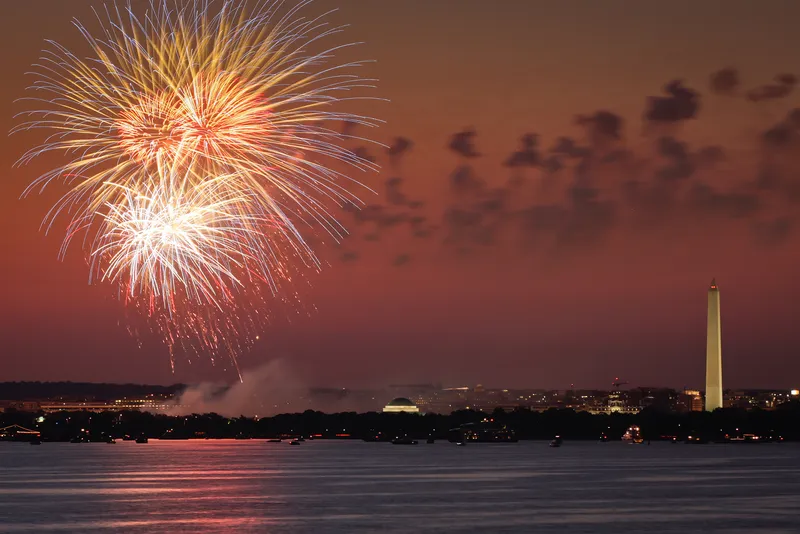
The Natuonal Mall provides some of the best viewing spots for the annual fireworks display.
Start the day by taking in a game. The Washington Nationals play at Nationals Park every July 4 at 11.05 am, and will this year take on rival New York Mets.
Spend time at the reopened National Portrait Gallery's America’s Presidents exhibit, with images of past presidents, other famous paintings, beautiful sculptures, and interactive elements.
On the steps of the National Archives, enjoy the performances by George and Martha Washington re-enactors, sign a copy of the Declaration of Independence, and enjoy other fun activities.
The National Mall provides some of the best viewing spots for the annual fireworks display, showcasing them in style against DC’s skyline of monuments and memorials.
Don’t miss Capitol Fourth, a star-studded musical concert that’s always held before the fireworks show. If you want to watch the fireworks while nursing your drink, DC has splendid rooftop bars that make for the ideal viewing spot.
Hop on for a trolley-tour ride
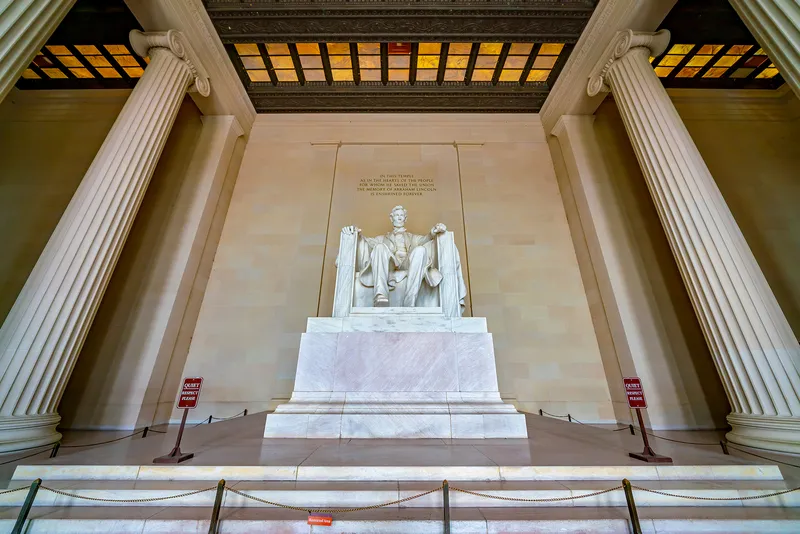
The Lincoln Memorial honours the martyred president who guided the country through civil war and freed four million slaves.
Get ready for some transportainment, a combination of transportation and entertainment, on board the hop-on-hop-off Old Town Trolley tour. A fixture on DC’s streets for the last 30 years, the tour offers you a chance to have a look at all the city’s highlights and landmarks before you decide which ones to explore further.
Starting at Union Station, the trolley takes you past the National Japanese American Memorial, US Capitol, Smithsonian Air and Space Museum, International Spy Museum, Washington Monument, Jefferson Memorial, FDR Memorial, and Martin Luther King Memorial. The friendly conductors keep up spirits with their banter and trivia as the trolley moves to Lincoln Memorial, National Museum of American History, National Portrait Gallery, the White House, and National Archives.
Spend time at the National Mall
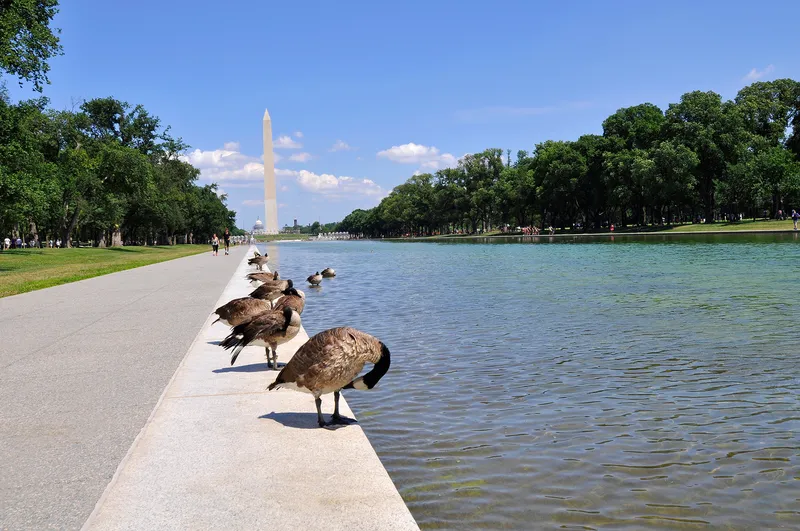
The National Mall is home to the reflecting pool and monuments such as the Lincoln Memorial.
America’s most visited national park was designed by Pierre L'Enfant as a democratic and classless space—the complete opposite of the gardens of Versailles, which allowed only nobility access.
Nicknamed “America’s front yard”, the National Mall stretches over 2 miles from the Lincoln Memorial on the west to the US Capitol on the east.
The Mall brings together America’s past, present, and future. Apart from many Smithsonian museums, the Mall is flanked by famed memorials, including the Lincoln Memorial, Jefferson Memorial, National World War II Memorial, the FDR Memorial, the Martin Luther King, Jr. Memorial, and the Vietnam Veterans Memorial.
The man-made Tidal Basin is where the National Cherry Blossom Festival is held each spring.
The stunning structures near the National Mall have made the area a popular filming location. Numerous films, including Forrest Gump, National Treasure, Captain America: The Winter Soldier, and Wonder Woman 1984, were filmed here.
Pay your respects at Arlington National Cemetery

The Arlington National Cemetery conducts between 27 and 30 funerals every day.
Established on May 13, 1864, during the American Civil War, Arlington National Cemetery is one of the most famous military cemeteries in the US and attracts over three million visitors a year. Nearly 400,000 people are buried on 639 acres, and people troop in to pay their respects to war heroes, national figures, military personnel, and others who served the US.
The cemetery is one of the two in the US that is maintained by the US Army— that’s obvious in the way most tombs are lined up, at straight angles.
Prominent people buried at Arlington include President John F Kennedy, Jacqueline Kennedy Onassis, Robert F. Kennedy, President William Howard Taft, Justice Ruth Bader Ginsburg, and the crews of the Columbia and Challenger space shuttles. The cemetery also houses the Tomb of the Unknown Soldier.
Visiting Arlington is a moving experience. Thousands of funerals and remembrance ceremonies are held each year, a reminder of lives lost to war and violence.
Explore the Smithsonian museums
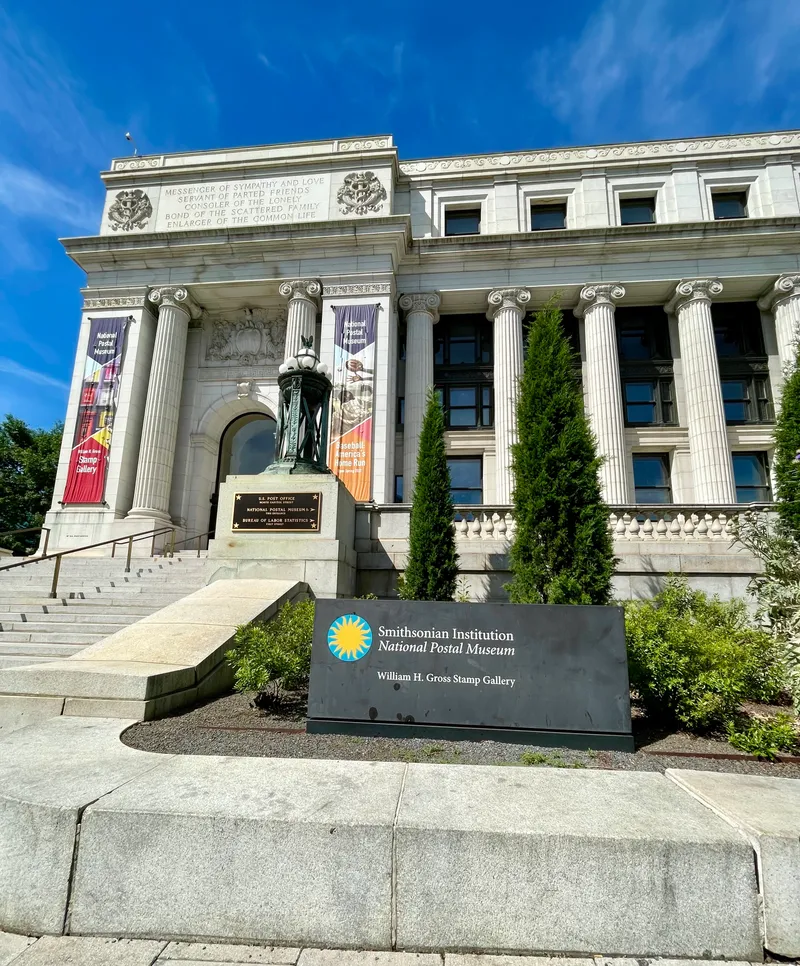
The National Postal Museum showcases America's postal history, from Colonial times to the present. Photo: Teja Lele
There’s something for everyone at the Smithsonian Institution, a world-renowned museum and research complex, comprising 17 museums, numerous galleries, and a zoo. Entry to all the museums is free. The toughest decision? Which ones to leave out!
The National Museum of Natural History is easily recognised, courtesy the green dome and size (equivalent to 18 football fields); it has 140 million-plus natural science specimens and cultural artefacts. The National Air and Space Museum showcases man’s forays into space while the National Museum of American History offers a detailed look at the country’s past. The Postal Museum is an interesting one: it showcases America’s relationship with the mail down the ages.
Art lovers will find something to enjoy at the American Art Museum and Renwick Gallery, National Portrait Gallery, National Museum of Asian Art, and National Museum of African Art. Spread over 163 acres, the National Zoo, also a global research and conservation centre, is a favourite with families.
Stroll through historic Georgetown
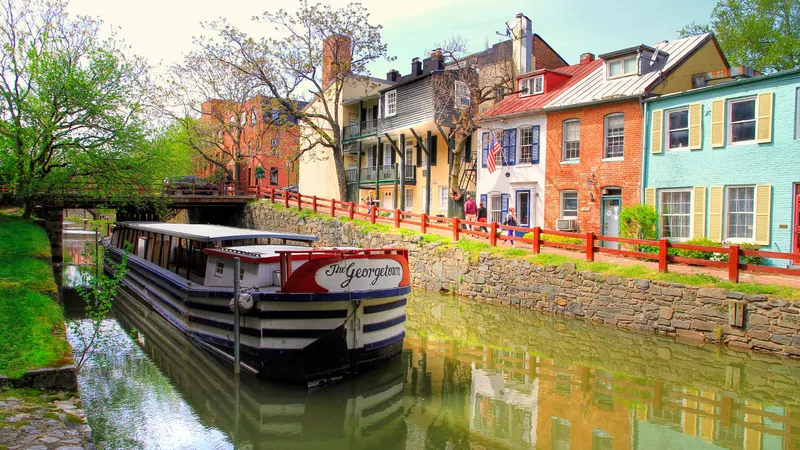
Georgetown is a charming area, with federalist architecture and cobblestone streets. Photo: Georgetown DC
Known for its waterfront and cobbled streets, Georgetown was originally established as a tobacco port town in Maryland. More than two centuries later, in 1967, it was designated a National Historic Landmark.
Home to African Americans since its founding, Georgetown is renowned for federalist architecture, historic brick and frame row houses, and grand estates dating back as early as the mid-1700s. The area’s famous residents include John F and Jacqueline Kennedy, who stayed in Georgetown individually and as a couple. It was here that JFK met, courted, and married Jacqueline Bouvier; she moved here as a new bride and then again after the death of her husband.
Don’t miss Blues Alley, the oldest, continuously-operated jazz supper club in America. The venue has hosted every major jazz artist from Ella Fitzgerald to Tony Bennett.
Check into one of America’s most infamous hotels
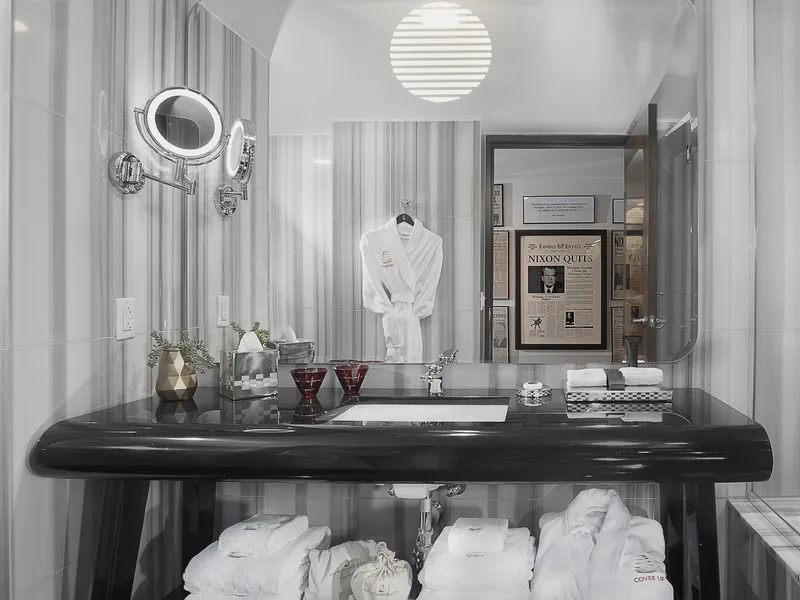
A break-in at the $1,600-a-night ‘Scandal Room’ at the Watergate Hotel brought down US President Richard Nixon. Photo: Watergate Hotel
On June 17, 1972, a night guard at a DC hotel and office complex saw a taped-open exit door while making his rounds. He alerted the authorities, setting off a scandal that led to the toppling of President Nixon. More than 40 years later, the word Watergate has become so synonymous with corruption that just adding the suffix “gate” to the end of a word signifies a scandal.
But before it became synonymous with scandal, Watergate was also one of DC’s most luxurious and popular hotels. It continues to be an exquisite property.
Don’t miss the concierge’s tour of the Scandal Room (if not occupied by a guest), where it all went down. Decorated in collaboration with Lyn Paolo, the costume designer for Scandal, it contains items from the Watergate period: a manual typewriter, a reel-to-reel tape recorder, and binoculars.
Bite into a half-smoke at Ben’s Chili Bowl
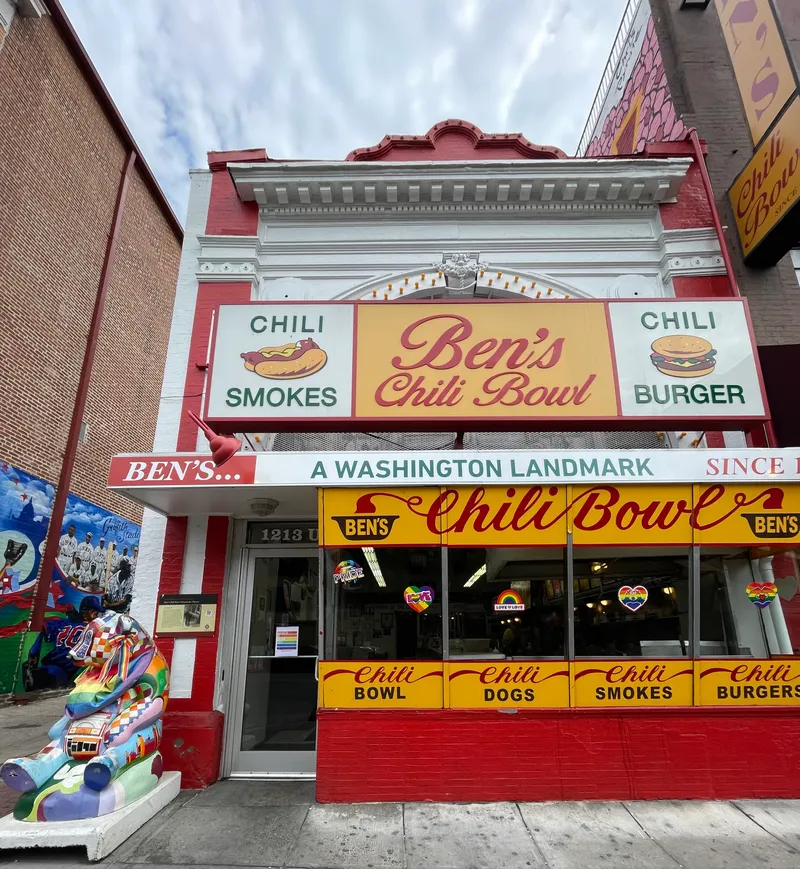
Ben's Chili Bowl is a Washington landmark. Photo: Teja Lele
There’s no way you can miss the bright yellow and red façade of Ben’s Chili Bowl. Opened by Ben and Virginia Ali in 1958, the eatery, located on the U Street Corridor, is now a Washington landmark.
The most popular item on the menu is the half-smoke, voted DC’s signature dish. This hot dog has a half-pork, half-beef sausage that’s char-grilled, then dressed with tangy mustard and crunchy white onions, and smothered with sweet, smoky homemade chilli.
The list of celebrities who have eaten at the Bowl is long: Barack Obama, Pope Francis, George Bush, Serena Williams, Bono, Larry King, Anthony Bourdain, Bruno Mars, and more.
U Street, earlier known as Black Broadway, has now become a hipster hotspot, which makes Ben’s popular with locals as well as tourists keen to get a “taste of Washington”.
(Image credits: Shutterstock)
Edited by Megha Reddy







